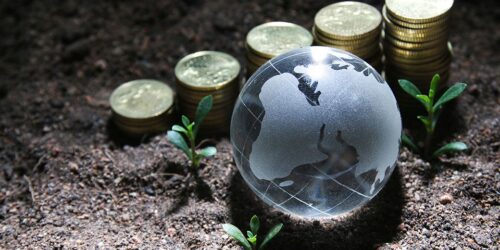Pakistan’s economic woes are aggravating with shrinking foreign exchange reserves, rising inflation, historic currency devaluation, and escalating current account deficit – forcing the country once again to borrow from external sources such as the IMF and Saudi Arabia.
Trade deficit has registered an alarming increase by more than 117.25 percent in the first five months of the current fiscal year. Merchandise trade deficit has bulged to $20.746 billion in July-November 2021, up from $9.549 billion in the same period last year. During July-November 2021, the country’s current-account deficit (the broadest measure of trade) grew to more than $5.08 billion, accounting for 4.7 percent of GDP, as imports outstripped exports.
One of the primary reasons for the steep rise in import bills is the disruption in the global supply chain, which has resulted in an upsurge in commodity prices. In addition to this, the import of raw materials, capital goods, and food group products with inelastic demand have significantly contributed to this downward trend. Despite that, exports grew by 27 percent to $12.365 billion in July-November 2021, compared to $9.747 billion in the same period last year, but the effect of this surge has potentially failed to enhance the foreign exchange to facilitate imports.
This triggers a basic question, how to balance the unbalanced trade structure? Incremental efforts are required to correct this destabilisation for long-term economic growth.
First, short-term economic growth is accelerated by an increase in aggregate demand, whereas long-term or potential economic growth is bolstered by an increase in the economy’s productive capacity. For production capacity to increase, savings and investment should also be increased. Expansion of domestic production capacity stands at the center of this paradigm to keep the growth stabilised; otherwise demand-driven industrial growth will trigger the trade and current account deficits, respectively.
Second, Pakistan is lagging behind regional giants in terms of labour productivity. According to the ILO, China’s output per person has increased by 388 percent between 2000 and 2019, while India’s has grown by 177 percent, Bangladesh’s rose by 109 percent, and Pakistan’s increased by only 32 percent. Industrial leaders in the export sector largely rely on obtaining concessions, tax exemptions, subsidies, or low borrowing rates, which keeps them reliant on the government’s crutches and entangle them in the current low productivity status. They should unlock the industry’s hidden potential by enhancing labour training & skills, treating the workforce fairly, hiring professionals, reforming internal operations, acquiring new technologies, forming joint ventures, attracting foreign direct investment, and raising finance for expansion.
Third, the influx of Foreign Direct Investment (FDI) into the manufacturing and agriculture sectors is another source of productivity and efficiency. However, overall, the flows of investment are very meager and predominately attracted by telecom, banking, oil & gas – which has a short-term effect on economic growth. The manufacturing industry being Pakistan’s economic backbone has received negligible foreign investment, hence has missed out on a massive opportunity to access global supply chains, technological, know-how, designing, branding, marketing networks, and managerial practices. As a result, policies must be steered to inspire investment in the primary and secondary sectors of the economy for long-term economic growth.
Fourth, under the umbrella of CPEC, Chinese firms are all set to choose special economic zones in Pakistan because of the access to the new port and close political relationship. The government must strive to take advantage of this once-in-a-lifetime opportunity by offering a large pool of human capital and linking domestic industries. This will generate employment, accelerate production, and ultimately enhance export. In addition, under the second phase of the free trade agreement with China, 83 percent of Pakistan’s global exports have been liberalised, including textiles, garments, leather, chemicals, seafood, and meat, among other things. Pakistan should reap the benefits of the duty-free status and cheaper transportation costs to gain access to Chinese markets and avail advantage of enhanced competitiveness. According to economist Ishrat Husain, a one percent market share of Chinese imports would increase our overall exports by $20 billion.
Fifth, the current exceptionally high trade deficit is primarily due to an increase in the price of imported items; the quantity imported hasn’t risen significantly as much. This also implies that the import commodities are price insensitive and will not be affected much even if further currency devaluation occurs. This necessitates the replacement of imported goods with locally produced commodities in order to alleviate pressure on import bills. For example, we may opt to replace gasoline engines with electric ones.
In a nutshell, the decline in export competitiveness is the key factor for the trade deficit as the share of exports in GDP has plummeted from 16 percent in 1999 to 10 percent in 2020. Pakistan’s exports lack diversification as well as sophistication and competitiveness. A long-term strategy to improve firm productivity that stimulates competition, innovation, and optimises export potential is required to augment competitiveness. To boost exports, a gradual reduction in effective rates of protection through a long-term tariff rationalisation approach is also required.
A more discerning and logical approach is needed to replace the prevalent narrative that “imports are damaging and should be discouraged.” There should be no reluctance as long as imports can be sustained by export revenues, FDI, and remittances, and contribute positively to production and exports.





